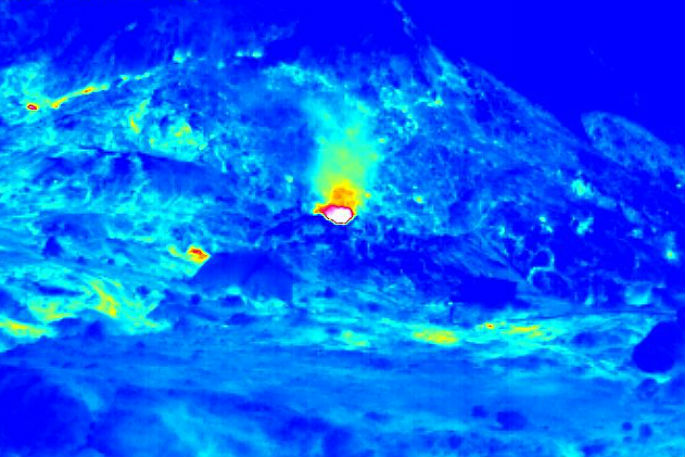Volcanologists are testing a security industry development combining handheld thermal imaging cameras on the live volcano at White Island.
Web cameras work well in day light and when the lens is not covered in dust or sublimates from the volcanic plume.
Add a recent security industry development of thermal sensor modules to improve night views - which are now able to run as ‘web cameras' – and GeoNet technicians saw the potential for volcano monitoring.
'Monitoring volcanoes has many challenges; a couple being how do we see at night and how hot is that vent we can see? Is it heating or cooling?” says volcanologist Brad Scott.
'One of the technologies that has helped us a lot is web cameras and another is handheld Thermal Infra-Red cameras. What if we had both in one unit?
'So where better to test this idea than at White Island, after all it's an active volcano. In fact our most active at present, last erupting in April and September 2016.
'Since we need to understand how volcanoes work and what they are up to is a big part of our monitoring it sounds perfect. A camera that works 24 hours would be a great tool. Even better if it can tell us something about the temperatures as well.”
A TIR camera measures emitted energy from the surface it is looking at, with more energy coming from hot surfaces than cold ones.
The camera collects the data digitally and then applies a ‘false colour' to make an image.
'One of the advantages is images can be collected at night, while our traditional web cameras see little at night unless the moon is out,” says Brad.
'The thermal sensor module will potentially give higher quality data with spatial coverage of areas around the vents as well and appears to be cost effective.
'We recently took the thermal sensor module to White Island to learn about the data quality, thermal range, spatial cover and the effect of steam and gas on the path between the sensor and feature we are looking at.”
GeoNet also plans to make use of it at other volcanoes and geothermal systems to learn about its capabilities.
One constraint on all web cameras at active volcanoes is the lens has to be protected.
For the TSM to work this has to be special material to allow the emitted energy to pass through.
'We are not sure how the acid rain will affect this. Just one of our many challenges. If we can make all this work it will improve our understanding of how volcano systems work and better inform us about the hazards and risks from volcanoes.”
 The same White Island fumarole as seen in the daylight.
The same White Island fumarole as seen in the daylight.



0 comments
Leave a Comment
You must be logged in to make a comment.